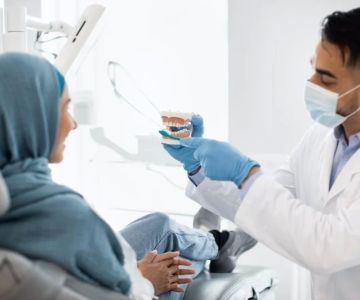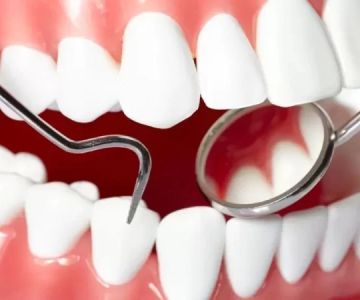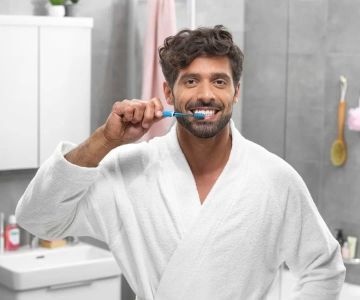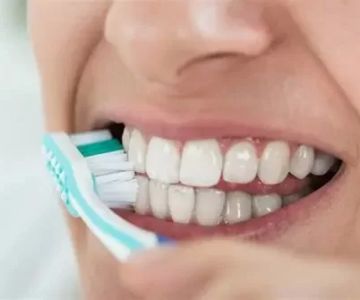How to Educate Patients on Oral Hygiene: Effective Strategies for Better Health
Educating patients on the importance of good oral hygiene is one of the most critical responsibilities of dental professionals. Proper oral care helps prevent dental issues such as cavities, gum disease, and bad breath, improving the overall quality of life. However, many patients struggle with maintaining consistent oral hygiene habits, which makes it essential for healthcare providers to offer clear, engaging, and practical education. This article will explore effective strategies for educating patients on oral hygiene, ensuring they understand the value of their oral health and the steps to maintain it.
The Importance of Oral Hygiene Education
Oral hygiene is about more than just having a clean smile; it directly impacts overall health. Poor oral hygiene can lead to serious dental and systemic health problems, such as periodontal disease, which is linked to heart disease and diabetes. Unfortunately, many patients fail to understand the long-term effects of neglecting their oral health, which is why educating them is crucial. With proper education, patients can learn the right techniques to prevent dental issues and maintain optimal oral health.
1. Start with the Basics: Brushing and Flossing
The foundation of oral hygiene education starts with the basics: brushing and flossing. Many patients may not be using the correct techniques or may be unaware of how frequently they should brush and floss. Begin by explaining the importance of brushing at least twice a day with fluoride toothpaste to remove plaque and food particles. Emphasize that brushing should be done for two minutes, covering all surfaces of the teeth, including the back molars.
Brushing Techniques
Show patients the correct brushing technique by using a model or mirror. Demonstrate using gentle, circular motions rather than scrubbing back and forth, which can damage the gums and enamel. Encourage patients to replace their toothbrush every three to four months or sooner if the bristles become frayed.
Flossing Tips
Flossing is an essential part of oral hygiene that many patients overlook. Teach patients how to properly floss by gently sliding the floss between the teeth and curving it around each tooth to remove debris and plaque. Explain that flossing once a day is sufficient to maintain healthy gums and prevent cavities in areas that toothbrushes can't reach.
2. Use Visual Aids and Demonstrations
Visual aids are an excellent way to help patients understand the importance of proper oral hygiene. Use models of teeth and gums to show the effects of plaque buildup and how it can lead to cavities or gum disease. Demonstrations on brushing and flossing techniques using a model or even a mirror can be extremely effective, especially for younger patients or those who struggle with motor coordination.
Educational Posters and Videos
Posters and videos in the dental office can reinforce the importance of proper oral hygiene. Videos demonstrating brushing and flossing techniques or the consequences of poor oral hygiene, such as gum disease or cavities, can help patients grasp these concepts more effectively. You can also recommend dental care apps or YouTube videos for ongoing education at home.
3. Tailor Education to Individual Needs
Each patient has unique oral health needs based on their age, lifestyle, and medical history. Tailoring your education to meet these needs ensures that patients understand the specific actions they need to take. For example, elderly patients may have different challenges, such as dry mouth or difficulty holding a toothbrush, while children may need additional guidance to make brushing fun and engaging.
For Children
When educating children, make oral hygiene fun and interactive. Use kid-friendly toothbrushes and flavored toothpaste to encourage regular brushing. Explain the importance of brushing in simple terms, and even use characters or toys to make the process enjoyable. Encourage parents to supervise their child’s brushing until they are able to do it effectively on their own.
For Elderly Patients
Elderly patients may experience challenges such as dry mouth, difficulty with mobility, or dentures. Explain how they can manage these issues with proper hydration, saliva substitutes, and specialized cleaning tools for dentures. For patients with arthritis or limited dexterity, suggest electric toothbrushes or flossing tools to make oral care easier and more effective.
4. Discuss the Role of Diet in Oral Health
Many patients are unaware of the impact diet has on oral hygiene. Explain how sugary foods and beverages can contribute to cavities by feeding harmful bacteria in the mouth. Encourage patients to reduce their intake of sugary snacks, sodas, and processed foods, and to opt for healthier options such as fruits, vegetables, and dairy products, which promote good oral health.
Hydration and Healthy Eating Habits
In addition to limiting sugar, discuss the importance of staying hydrated and eating a balanced diet rich in vitamins and minerals, such as calcium and vitamin D. These nutrients are essential for maintaining strong teeth and gums. Encourage patients to drink plenty of water throughout the day, as it helps wash away food particles and neutralizes acids in the mouth.
5. Use Positive Reinforcement
Positive reinforcement is an excellent motivator for patients, especially when it comes to children or those struggling with oral hygiene habits. Praise patients for their efforts and progress, and provide small rewards or incentives for good behavior. For example, you might give children a dental sticker or a new toothbrush when they demonstrate proper brushing and flossing techniques during their appointment.
6. Address Specific Concerns and Answer Questions
Many patients may have concerns about oral hygiene, such as sensitivity, tooth discoloration, or gum bleeding. Be sure to address these issues and provide tailored solutions. For instance, if a patient experiences tooth sensitivity, suggest a desensitizing toothpaste or fluoride treatments. If a patient is concerned about gum bleeding, explain that it may be due to plaque buildup or gum disease, and stress the importance of regular flossing and professional cleanings.
7. Encourage Regular Dental Checkups
Regular dental checkups are essential for maintaining oral hygiene and preventing dental problems. Encourage patients to visit the dentist at least twice a year for routine exams and cleanings. Remind them that even if they are following a good oral care routine at home, professional checkups can help catch problems early and provide additional preventive care.
8. Provide Written Materials and Resources
Some patients may need additional reminders or information after their visit. Providing printed materials such as brochures, tip sheets, or instructional guides on proper brushing, flossing, and oral care can help reinforce your verbal instructions. Additionally, consider recommending trusted online resources or dental care apps that provide ongoing education and tips for maintaining oral hygiene.
By taking a proactive and personalized approach to educating patients on oral hygiene, dental professionals can empower individuals to take control of their oral health. Whether through hands-on demonstrations, visual aids, or ongoing support, these education strategies can help patients build lasting habits that lead to healthier teeth and gums for years to come.







 University Place Smiles4.0 (550 review)
University Place Smiles4.0 (550 review) Kenton Johnson, DDS5.0 (5 review)
Kenton Johnson, DDS5.0 (5 review) Skidmore Timothy E DDS5.0 (6 review)
Skidmore Timothy E DDS5.0 (6 review) Dr. William G. Gardner, DDS4.0 (12 review)
Dr. William G. Gardner, DDS4.0 (12 review) Brick Dental Studio4.0 (101 review)
Brick Dental Studio4.0 (101 review) Caton Crossing Dental Care4.0 (50 review)
Caton Crossing Dental Care4.0 (50 review) The Importance of Oral Health Education During Pregnancy for a Healthy Pregnancy
The Importance of Oral Health Education During Pregnancy for a Healthy Pregnancy Best Tips for Brushing Your Teeth Properly for Healthy Gums: Essential Techniques for Oral Health
Best Tips for Brushing Your Teeth Properly for Healthy Gums: Essential Techniques for Oral Health Why Skipping Dental Checkups Can Lead to Bigger Oral Health Problems
Why Skipping Dental Checkups Can Lead to Bigger Oral Health Problems Advantages of Porcelain Dental Restorations
Advantages of Porcelain Dental Restorations How Can Diabetes Cause Tooth and Gum Problems? Preventing and Managing Oral Health Issues
How Can Diabetes Cause Tooth and Gum Problems? Preventing and Managing Oral Health Issues Healthy Habits for Promoting Good Oral Health and Hygiene: Tips for a Healthy Smile
Healthy Habits for Promoting Good Oral Health and Hygiene: Tips for a Healthy Smile